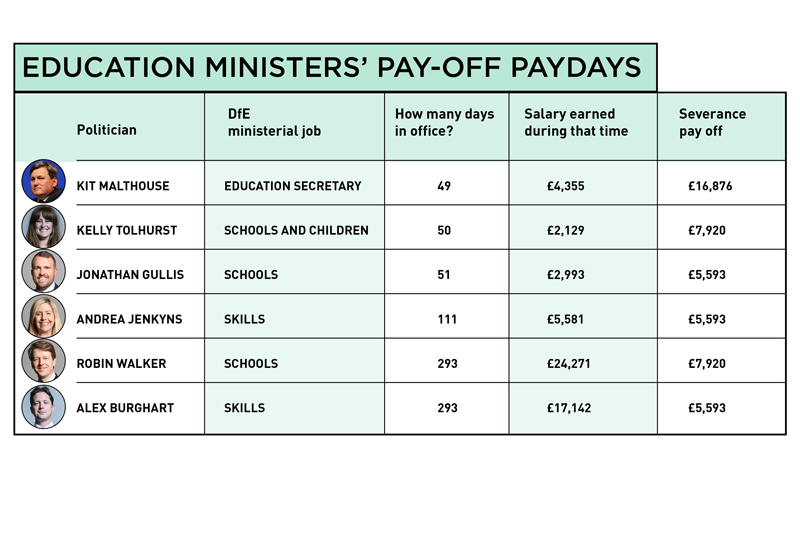“Many” students have dropped out of T Levels after being “misled” onto the flagship qualifications, while experienced teachers struggle to teach the “complex” courses, a damning Ofsted review has found.
Employers are also being left “disappointed” and “poorly informed” about the mandatory 315-hour industry placements for T Levels, as the inspectorate warns that some placements are “not appropriate” for the subjects learners are studying.
Students and teachers also reported feeling “let down” by the early rollout, as universities refuse to accept the qualifications as valid entry courses, adding that they fear the T Level brand has already been damaged.
Ofsted laid bare the “range of shortcomings” in a government-commissioned review of T Levels published today, which concluded there “remains considerable work to do” to make sure the courses, which are the new technical equivalent to A-levels for 16- to 19-year-olds, can be offered at scale.
The watchdog even urges the Department for Education to rethink its wider level 3 reforms, which involve axing most alternative qualifications, like BTECs, from 2025, in light of the findings.
Sector leaders said Ofsted’s verdict shows that ministers need to “drop the rhetoric, face the reality and rethink their plans for qualification reform”.
The DfE admitted there is “further action is needed” to make T Levels a success.
Students ‘misled’ as teachers ‘struggle’
Ofsted has conducted a thematic review of the implementation of T Levels since the courses launched in September 2020. The qualifications aim to combine high-quality study of theory with development of practical skills.
The watchdog’s research involved interviews with employers as well as almost 700 teaching staff and more than 2,100 students and focused on courses in construction, digital, education, and health and science, along with the T Level transition programme.
The inspectorate will inspect T Levels as part of regular inspections from September 2023.
Today’s report said confidence in teaching the qualifications is on the rise but warned the courses are “not at all what students expected” in some cases, adding that “many” learners reported “being misled and ill-informed about their content and structure”.
Students on the health and science T Level were particularly “surprised” at the complexity of the science content and the academic nature of the course. FE Week revealed last year that around 1,100 students on this course had their results regraded after Ofqual found the exams were not fit for purpose.
One student told Ofsted: “The exams took all of our joy out of everything and really shook our faith in the course.”
Most providers set the entry criteria for T Levels as five GCSEs at grade four or above, but the watchdog found the initial assessment of students’ abilities at the start of their courses is “often weak”.
Inspectors said the practical aspects of courses are “generally taught well” but experienced vocational teachers “often struggle to teach theoretical content in sufficient depth or to set work that is appropriately challenging”.
“Many” providers have experienced difficulties in recruiting and retaining staff who have the required experience and expertise, the report added.
‘Disappointed’ employers
T Level students are required to complete a 315-hour industry placement to achieve the qualification – a policy feature often lauded by education ministers as the main reason why their new “gold standard” technical qualification stands above other level 3 rivals.
Ofsted said that “most students enjoy their industry placements and gain valuable insights into what it is really like to work in the sectors they are studying”.
But finding suitable placements, even after the Covid-19 pandemic, is a “barrier to increasing the number of T Level places available in many providers”.
Employers are also often “poorly informed” about the content and structure of T Levels, with Ofsted finding instances where industry placements “are not appropriate for the pathway that students are on”.
The report said digital placements were particularly difficult to find suitable placements for, adding that there have been instances where employers are “disappointed with the students’ skill level”.
Some students were left to arrange their own placements, while other placements involved “considerable travel, and students did not have the means to get to them”, namely in construction.
High drop-out rate
Around 17,000 students have started a T Level since 2020 but the DfE has so far refused to release data that shows how many stay on for the full two years.
Ofsted reported that “many” leave before the end of the course. At a few providers, no students moved on to the second year “because of their poor experience in the first year”.
The watchdog also flagged concern that the struggling T Level transition programme, a one-year post-GCSE course aimed at students who would like to do a T Level but are not ready for its academic and technical demands, is only pushing a “low” number of students on to a full T Level.
Unis reject T Levels despite minister promises
While T Levels were designed so that students can enter work straight after completing their course, ministers have repeatedly made clear that the courses are a viable entry route into university.
But Ofsted found cases where students who wanted to go to university were “surprised and disappointed that T Level qualifications are not always accepted as a valid entry qualification”.
It echoes a previous FE Week investigation that revealed less than half of all UK universities refused to accept T Level learners.
One digital T Level student told Ofsted: “I was initially planning to go to university and was told by my college that it should be no issue after doing the T Level. But of all the universities I applied for, I only got one offer, with the reasons for rejection being that I went with the T Level and not traditional A-levels.”
Skills and universities minister Robert Halfon wrote to vice chancellors in January, ordering them to publicly clarify whether they accept T Levels as valid entry qualifications for their universities.
‘Carefully consider’ bonfire of other level 3s
Ofsted found that providers have often introduced T Levels because they are expecting that other, similar courses will not be eligible for public funding in the future, as proposed in the DfE’s consultations on qualification reform.
A key recommendation the watchdog makes to the DfE is for officials to “carefully consider the implications and impact of the planned withdrawal of funding for other similar courses to ensure that students are not disadvantaged”.
James Kewin, deputy chief executive of the Sixth Form Colleges Association which leads the Protect Student Choice campaign, said: “Today’s report is clear that T Levels are not yet the gold standard, mass market replacement for BTECs the government believes them to be.
“Ministers need to drop the rhetoric, face the reality and rethink their plans for qualification reform. We all want T Levels to succeed, but not at any cost, and leaving tens of thousands of BTEC students without a pathway to higher education or employment is not a price worth paying.”
David Hughes, chief executive of the Association of Colleges, said Ofsted’s report “exposes a programme which is complex and therefore running into understandable implementation issues and glitches”.
He added: “The risk is too great to shut down funding for qualifications which are working well for learners now in the hope that the new T Levels will be better because we want them to be.”
Ofsted chief inspector Amanda Spielman said: “As with many new qualifications, there are some teething issues with T Levels, but in most cases providers and employers seem to be working well together to address them. However, we saw a range of shortcomings which providers and the DfE will want to address.”
A DfE spokesperson said: “We welcome the recognition of these high-quality qualifications as a strong technical pathway for young people when delivered effectively.
“We have already made good progress to address many of the areas highlighted in the report, but we know further action is needed.”

